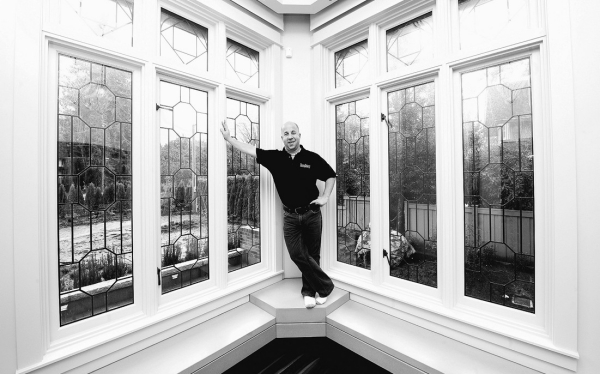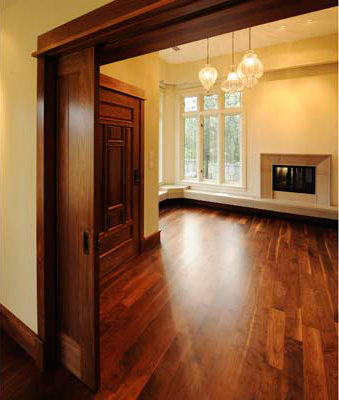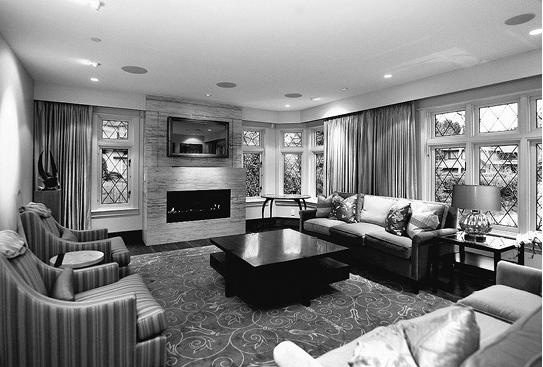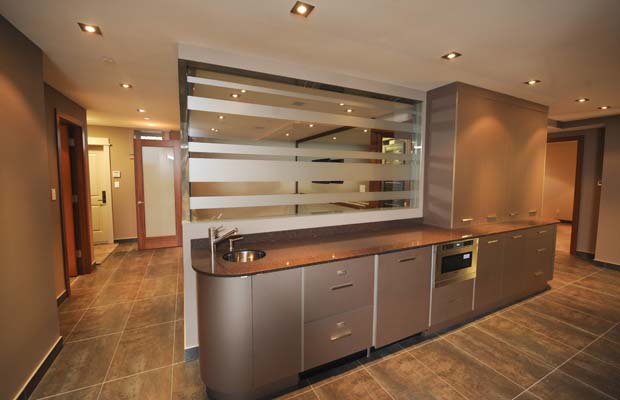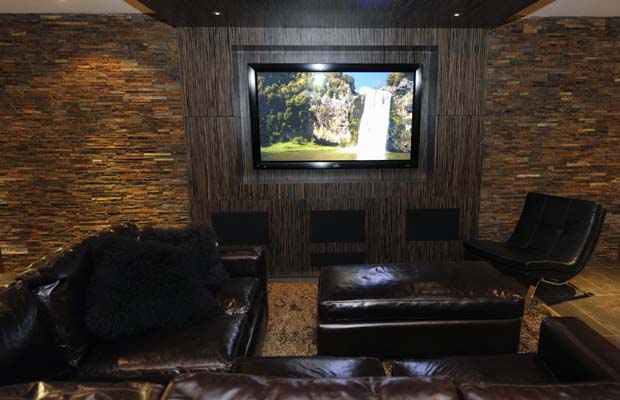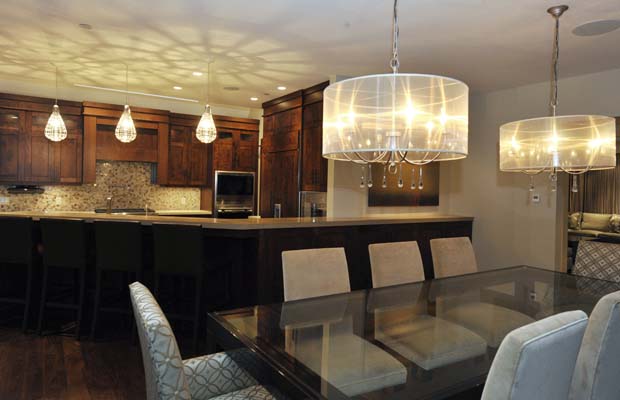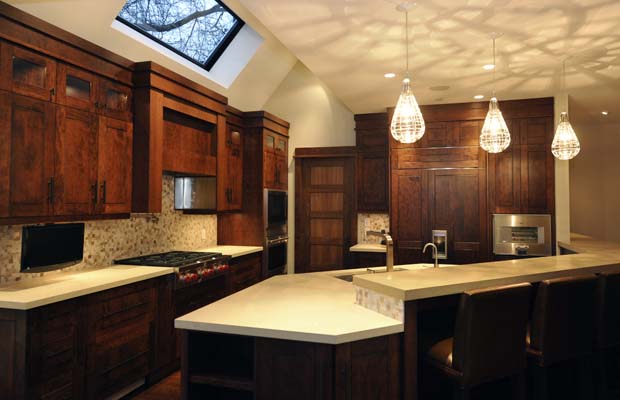Stephanie Armour
USA Today

Marifran Manzo-Ritchie and her husband, Paul Ritchie, share a laugh in the foyer of their Phoenixville, Pa., home, which they plan to put on the market in the spring. By Eileen Blass, USA TODAY
Chris and Candice Basso would like to move up to a larger home this spring, taking advantage of a federal tax credit worth up to $6,500 for repeat home buyers.
But even a big tax credit won’t be enough to lift them into a bigger, better home.
The Centreville, Va., couple are trapped in a two-bedroom townhouse that’s worth less than their unpaid mortgage. They face the same predicament with a condo that they own and rent out. Unable to sell either property for what they owe and with their equity wiped out, a new mortgage is out of the question.
Chris Basso fears it may be years before they can buy a bigger place — a real concern, because Candice is scheduled to give birth to their first child in August, and their townhouse already feels cramped. “I’ll have a teenager by the time housing values come back up and I can get out of my house,” says Basso. With a baby coming, “We’re trying to figure out where to fit all the furniture. We still scour the home listings every day just to see what we could afford now. It’s heartbreaking to seewhat we could get today with our housing dollar now, but we’re stuck.”
Stuck, like millions of other homeowners, also underwater on their mortgages, thanks to sinking home prices. The plight of people such as the Bassos is a big worry for the housing industry as the crucial spring season nears, when nearly a third of the year’s sales are made.
Despite the tax credit — which expires April 30 — and 30-year fixed mortgage rates that are still hovering around 5%, it’s an open question whether enough move-up buyers will enter the market this spring to bolster housing’s fledgling recovery and energize a broader economic rebound.
“For a well-functioning market, you have to have that trade-up buyer,” says Mark Zandi, chief economist at Moody’s Economy.com.
Zandi estimates that more than 15 million homeowners are underwater — about one in five, he says. First American CoreLogic, using a different methodology, estimates 10.7 million residential properties had negative equity at the end of September, or almost one in four, by its reckoning.
Either way, a substantial number of homeowners are financially unable to enter the home-buying market just now. “Trade-up buyers are normally a big chunk of the market,” Zandi says. “We’re going into (the spring market) with less steam.”
Move-up buyers made up 53% of 2009’s shrunken market, down from about 60% in recent years, according to the National Association of Realtors (NAR). If theydon’t return in larger numbers, the inventory of mid- to high-price homes will remain high — dragging down home values overall.
Congress recognized the importance of move-up home buyers when it renewed and expanded last year’s popular first-time buyers credit to cover people who have bought homes before. Under the credit’s rules, people who owned the home being sold or vacated as their primary residence for five-consecutive years in the past eight are eligible for a credit of up to $6,500 on the purchase of a replacement home.
The deadlines are tight: Purchase contracts must be signed by April 30, and closings have to occur by June 30.
The NAR estimates 1.5 million homeowners will take advantage of the credit, but there’s no way to tell how many deals would have occurred without the credit.
Underwater homeowners aren’t the only ones unable to benefit from the credit. Many potential buyers in higher-price markets such as New York, Boston, Hawaii and San Francisco won’t qualify because their incomes are too high. Under the income limits, single taxpayers with incomes up to $125,000 and married couples with incomes up to $225,000 qualify for the full tax credit.
“Here in New York and a lot of major metro areas, they will blow that income cap,” says Edward Ades, a vice president with mortgage brokerage Universal Mortgage.
Some real estate professionals say buyers who expected to benefit from the tax credit are frustrated when they discover they aren’t eligible.
“A lot of people think it will be great, and then they look into it and find out they won’t get it. A lot of these people are young professionals,” says Janice Leis, a broker in Boca Raton, Fla. “It’s like false advertising. They get out with their hopes up, and they get their hopes dashed.”
Good times for first-timers
The past year has been good for first-time home buyers. The collapse in home prices, low interest rates and last year’s first-time buyers tax credit made buying a home more affordable than it’s been in years. But for people who bought homes at or near the market peak in 2005, moving out and up to more expensive houses has been harder.
Local market figures bear this out: Sales of entry-level homes are booming, while sales of pricier homes are sliding.
In the Los Angeles metro area, sales of entry-level homes at a median price of $248,737 soared from 28% of transactions in November 2007 to nearly 46% in 2009, according to Zillow.com.
Buyers are flocking to snatch up homes in that price range, which include 900-square-foot homes in the heart of the city with palm trees in the front yard, and two-bedroom, 890-square-foot condos in the beachside neighborhood of Playa del Rey.
“At the low end, there is absolutely activity,” says Carol Grogan, with Prudential California Realty. “It’s amazing. If it’s under $500,000, especially if it’s a house, there’s high demand. It’s crazy.”
But sales of mid- and high-price homes have dropped sharply. From November 2007 to November 2009, homes at a median price of $408,417 have slid from 37% of transactions to about 32%.
Homes priced at a median of $707,543 have fallen from about 35% to 23%, according to Zillow.
About a fifth of the homes in the Los Angeles metro area, covering Long Beach and Glendale, are underwater, Moody’s Economy.com’s data show.
It’s a similar situation in the Seattle metro area, where a fifth of the homes are underwater.
“We’re seeing more activity in the lower level,” says Cathy Millan, a Realtor with Windermere Real Estate in Seattle. “There have been a lot of first-time home buyers coming through, but the higher end is sitting.”
Sales of entry-level homes at a median price of $209,952 jumped from 37% in November 2007 to 40% in November 2009, according to Zillow.com.
Those priced at a median of $478,282 slipped from 32% in November 2007 to 30% in November 2009.
Signs of interest
Despite its shortcomings, the tax credit may be having some impact. Realtors say buyers are talking about both the move-up tax credit, as well as the credit of up to $8,000 for first-time buyers, when they look at homes. Some say the tax credit is launching the spring buying season unusually early this year.
Charlie Russo, a sales counselor with Plantation Homes, a home builder in Firethorne, Texas, says there’s no question the credits have pulled some buyers into the market.
“The low interest rates really have people in the market, and then the money (from the tax credit) is a huge incentive for people who weren’t looking right now,” Russo says. “It’s a perfect storm of incentives for them. No one ever paid me to buy a house.”
The tax credit is a motivator for Marifran Manzo-Ritchie, who says now seems like the perfect time for her to sell her home and buy another place.
It seems perfect because the home she bought in Phoenixville, Pa., for $150,000 seven years ago is now worth about $280,000 following the revitalization of the former steel town. Plus, her family, with three children, needs more space.
If she closes on a new home by June 30 as she believes she’ll be able to, she’ll qualify for the move-up home buyer tax credit. She and her husband are already working with a Realtor to list the house this month.
“Our home, which once seemed so big, seems very, very small now. And our property value has increased, so we have the equity,” says Manzo-Ritchie, 34, who runs a marketing agency from home. “But it’s the tax credit that really lit the fire under us.”






